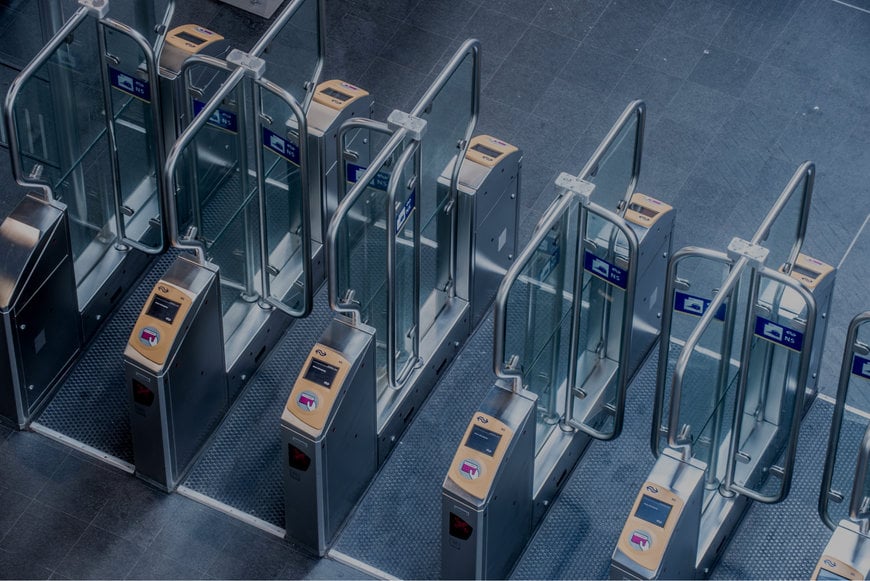www.industryemea.com
30
'23
Written on Modified on
The secret of smoother journeys
Discover how Thales is helping metro operators to run more trains and boost passenger satisfaction.

Metros are miracles of mobility. But delivering attractive and reliable journeys is a mammoth task – and metro operators face some big challenges.
The first is keeping pace with passenger demand. Operators need ways to run trains more frequently. They also need tools to reduce delays and adapt the flow of trains to match changing patterns of ridership – a vital capability post-Covid.
Enabling effortless journeys is the second challenge. Passengers expect a seamless travel experience, underpinned by reliable real-time information. And they want to feel comfortable and safe, both on trains and on the platform. How can these goals be achieved?
Transforming the passenger experience
Thales addresses the big challenges of urban mobility with digital solutions that satisfy the needs of both operators and passengers. These include Communications-Based Train Control (CBTC), passenger information and data-driven Operation Control Centres (OCCs). Below, we highlight five tangible benefits delivered by these technologies.
Extra capacity: CBTC is a powerful antidote to congestion and one of the most effective ways to boost the flow of trains. Thales’ SelTrac™ CBTC – the world’s leading train control solution for metros – is deployed for more than 45 customers worldwide. Thanks to SelTrac™ CBTC, headways of less than 60 seconds can be achieved, as well as capacity gains of 20% or more.
SelTrac™ CBTC can be configured for both attended and unattended (driverless) metro operations.
“Driverless delivers huge flexibility benefits,” says David Dimmer, Director of Product Strategy. “You can bring on trains at a moment’s notice, so operators can tackle changing patterns of demand.”
Fewer delays: delay-causing incidents such as jammed doors, illness and fire alerts are a fact of life on metros. The key is being able to restore train services rapidly once the problem is resolved. Every second counts, because a hold-up at one station can quickly cascade into delays up and down the line.
CBTC can make all the difference. “One of the big benefits of CBTC is that it is good at delay recovery – particularly if you have scope to reduce your normal headway,” says Dimmer. On CBTC lines that are driverless, delay recovery is even quicker thanks to automated turnbacks at terminal stations. Normal operations can be restored quickly with SelTrac™ CBTC without having to modify the timetable and turn some trains around early, which would be the case for a system with conventional signalling.
Trains when you need them: synchronising train services with passenger demand is a fundamental need on urban rail networks. Traditionally, lack of data about passenger flows and inflexible train operations have made it difficult to strike the perfect balance. But that could be about to change.
Thales is developing a data-driven approach to scheduling that taps into technologies including artificial intelligence (AI) and video analytics.
“The idea is to adapt the offer of trains based on a continuous prediction of passenger demand,” explains Stéphanie Joudrier, Solution Product Line Manager. “This is achieved using data from ticketing systems, counting sensors and DIVA, our video analytics solution for measuring passenger density.
Passenger flow prediction is a game changer because it allows operators to anticipate demand and adapt train services in a way that has not previously been possible. As well as boosting passenger satisfaction, smarter scheduling has significant energy-saving potential.
Escape the crowds: overcrowding is a major source of passenger dissatisfaction. It is also a common cause of delays – particularly when passengers try to squeeze into carriages that are already packed.
Better real-time information can help. Thales’ intelligent crowd monitoring and guidance solution shows passengers waiting on the platform which carriages of an approaching train are the least crowded. Information is relayed via platform displays with a pictogram of the approaching train. Colour-coded graphics indicate density levels onboard.
All of this is achieved using existing onboard CCTV cameras and Thales’ DIVA video analytics – the same crowd-monitoring technology used for passenger flow prediction. “Digital solutions such as DIVA are a win-win because they meet the needs of both metro operators and passengers,” says Joudrier.
Safe and happy passengers: you need a lightning-fast ability to respond to incidents when you run a railway. Operation Control Centres (OCCs) already play a vital role here. Thanks to the integration of subsystems in modern OCCs, operators can detect and take control of just about any incident.
The story doesn’t end there. “Deeper integration allows us to add new features and functions in the OCC,” says Joudrier. “A key area of focus for us is digitalising standard operating procedures to create synchronised workflows for crisis management.”
Dealing with unattended luggage is an example. OCC integration makes it possible to identify an incident of this sort automatically, generate an alert, and then assist the OCC operator with digitalised procedures. Rather than relying on a paper manual, all instructions are provided via an on-screen checklist that is directly linked to key subsystems – alarms, video surveillance, passenger information, power SCADA and traffic management. All the necessary interventions can be carried out from a single workstation.
Digital workflows also have exciting potential when it comes to passenger comfort. “You can use video analytics to identify situations where a passenger might need help, and back this up with standard operating procedures for providing assistance,” Joudrier says.
Solutions like these play a pivotal role in boosting passenger satisfaction, rebuilding ridership and most important of all, building a future we can all trust.
www.thalesgroup.com

